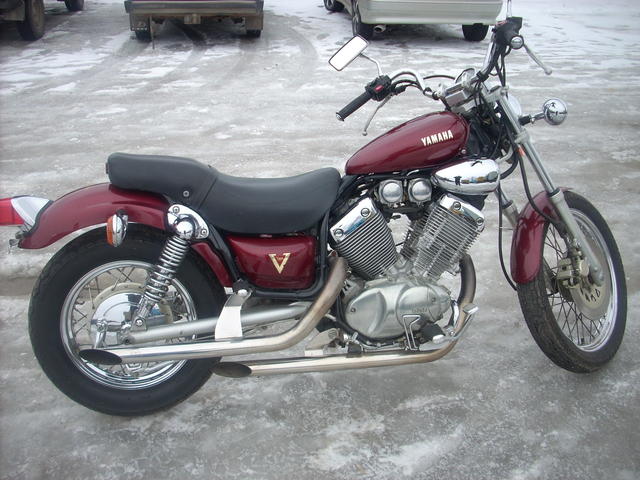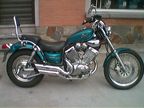1997 Yamaha Virago

Photo Information (Width: 640px, Height: 480px, Size: 98Kb)
| Price (out of date): | $4418 |
1997 Yamaha Virago specs
|
The bike was redesigned in 1984, switching from a rear mono-shock to a dual-shock design, and adding a tear-drop shaped gas tank. That year, Harley-Davidson, fearful of the inroads the Virago and other new Japanese cruiser-style motorcycles, pushed for a tariff on imported bikes over 700 cc. Yamaha replaced the 750 cc motor with 699 cc version to avoid the tariff, while the 920 cc engine grew to 1000 cc, and later 1100 cc. In the late 1980s a 250 cc Virago was added. A short production of 125 cc was also manufactured. [Yamaha made a XV125, XV250, XV400, XV500, XV535, XV700, XV750, XV1000/ TR1, XV1100. The XV400 being the rarest of the breed.] The larger-displacement Viragos were eventually phased out of production, replaced by the V-Star and Road Star series of motorbikes. The last motorcycle to bear the Virago name was the 2007 Virago 250. For 2008 it was renamed to the V-Star 250. According to Motorcyclist magazine , the early Virago has a design flaw in the starter system. This magazine states that the starter's defect exists in early Viragos models (1982 and 1983). However, the same flawed starter system was installed in the XV700, which was produced until 1988. The XV1000 had an improved system since it began production in 1984, which doesn't present the flaws. Also the XV1100 and the XV750 (1989 and up) do not present the starter system flaws found in the earlier Viragos. Motorcyclist Magazine suggested to weld the ring gear to its backing plate to solve the problem. Other solutions commonly used are the use of shims, which was Yamaha's proposed solution, then also the use of a new designed idler gear. None of these solutions are considered or proved to be permanent, and applying only one of them will not address other existing flaws in the system; however, great improvements have been reported by Virago owners that have applied them. » Read More About Yamaha Virago |
